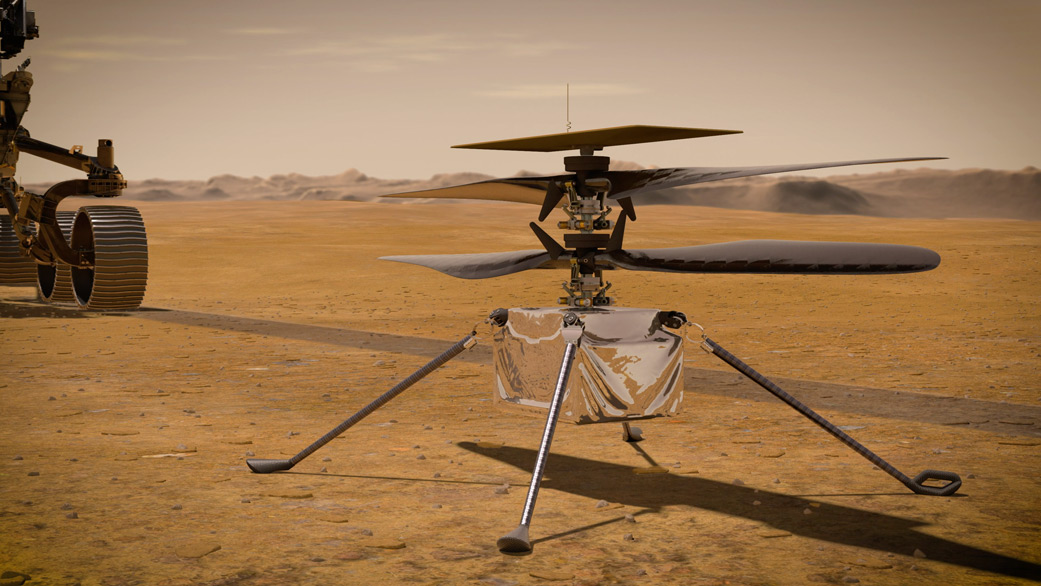The Mars 2020 mission recently launched, carrying the rover Perseverance to the red planet. It will be the fifth rover operated by NASA’s Jet Propulsion Laboratory (JPL), and if all goes well, it will spend its ten to fourteen-year lifespan searching for signs of past or present life on Mars. But unlike the rovers that came before it, Perseverance is also packing a passenger—the Mars helicopter, Ingenuity.
Ingenuity is an autonomous drone with two stacked rotors that is designed to make short, controlled flights of a maximum of 90 seconds. Before you brush that off as insignificant, remember that Orville only kept the Wright Flyer aloft for 12 seconds at Kitty Hawk—90 seconds aloft on another planet will be pretty impressive by comparison. If successful, it will be the first powered flight on another planet, and also help design the next generations of drones that will accompany man to Mars in the years to come.
To accomplish flight of any kind on Mars is difficult. Although gravity there is only 38% of Earth’s, the atmosphere is significantly thinner; in fact, it’s only about 1% of Earth’s atmospheric density. With these constraints in mind, Ingenuity’s designers had to keep weight to an absolute minimum, while finding a way to generate enough lift in the incredibly thin “air” of Mars.
The result is a shockingly light vehicle (the entire drone will add just under four pounds [1.8kg] to the Mars 2020 payload) that spins its two counter-rotating rotors at 2300 to 2900 rpms (that’s four to five times faster than the rotors of most Earth helicopters). The rotors themselves are made of foam core covered in carbon fiber, and only weigh 35 grams each!
Another fascinating weight saving method is the insulation—or lack thereof—that helps the batteries and main boards of the drone survive the -80 to -100C temperatures of the Martian nights. Between the thin covering of the drone and its interior electronics is a layer of trapped carbon dioxide that keeps everything warm. Even with this clever innovation, the solar rechargeable batteries still need to spend two-thirds of their energy every day on just generating enough heat to keep the chopper functional.
There is a roughly 20-minute communication lag between Earth and Mars, so the drone will fly autonomously, based on commands issued at JPL. Its onboard sensory suite includes cameras, gyroscopes, accelerometers, and an altimeter to make the many thousands of calculations per minute needed to keep the craft aloft, and to avoid terrain features. Even if an astronaut were there on the Martian surface, he wouldn’t be able to fly the drone with a joystick—it requires minute corrections that exceed human reaction times by an order of magnitude.
Ingenuity is on its way to Mars now, and will be taking its first flights in February of next year. That’s assuming it can survive the rigors of the voyage, which include vibrational loads during launch of up to 80 Gs, seven months of radiation exposure in space, and then a 9 G landing in the Jezero Crater of Mars. We here at the Planetary Broadcast Network wish Perseverance and Ingenuity safe travels!
Stay tuned to PBN for updates on this and the other important Mars-related stories, as well as all the news you need to know to be an informed citizen of our great, soon to be interplanetary, democracy.

